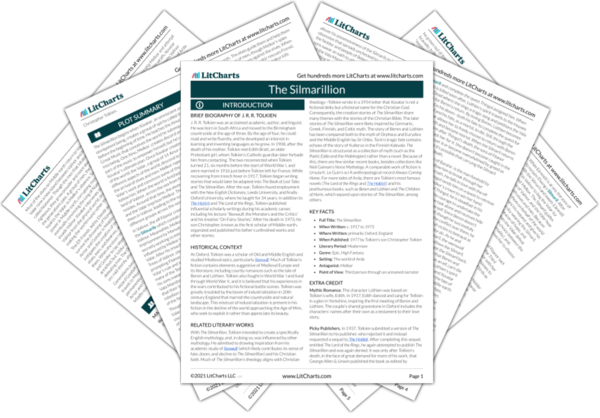Though the Silmarils provoke greed and violence, Lúthien’s possession of the Silmaril is a reminder that the jewels themselves are blessed, created by holy light. The Silmaril’s hastening of Lúthien’s death is not necessarily the curse that it appears to be—death, even for mortals, isn’t something to be feared, but merely a transition. By her early death, she and Beren are called beyond the world to the unknown place where the souls of mortals meet Ilúvatar.
